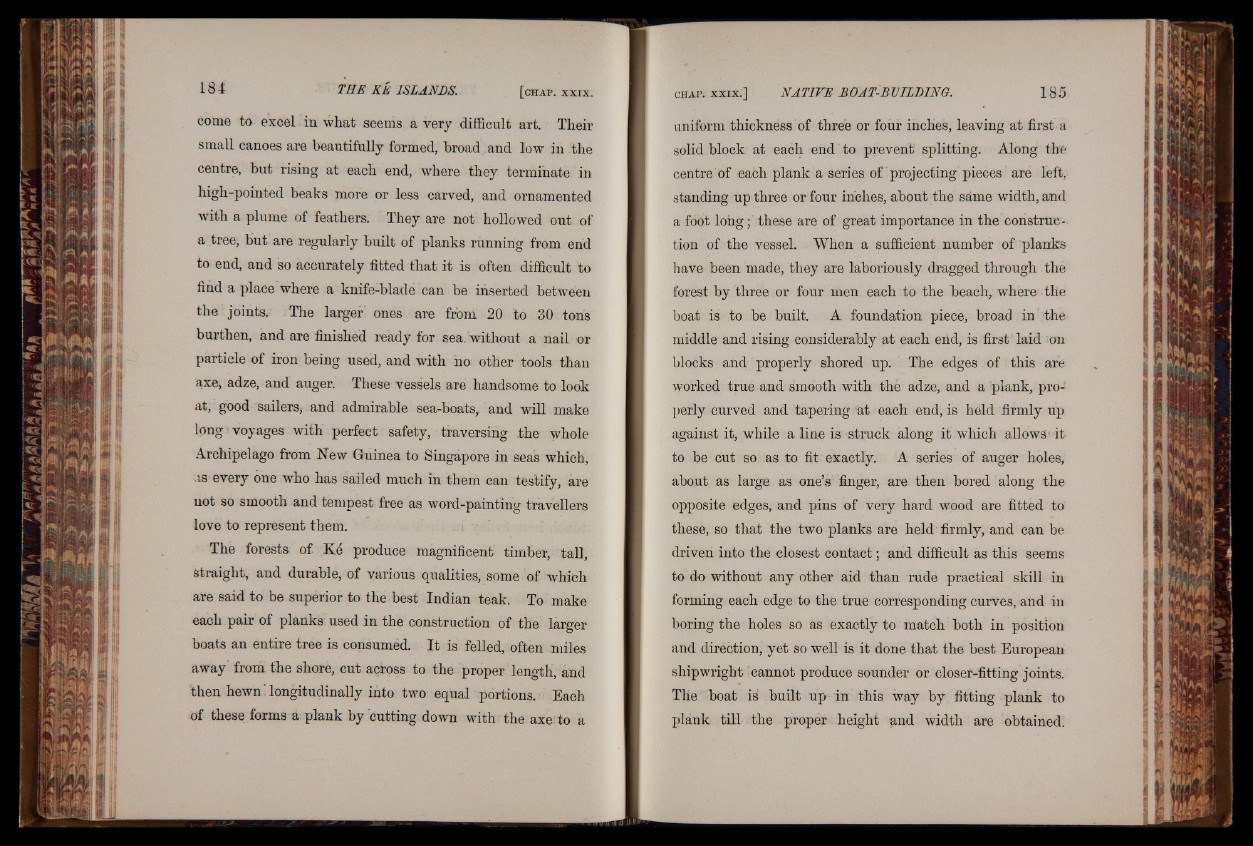
come to excel in what seems a very difficult art. Their
small canoes are beautifully formed, broad and low in the
centre, but rising at each end, where they terminate in
high-pointed beaks more or less carved, and ornamented
with a plume of feathers. They are not hollowed out of
a tree, but are regularly built of planks running from end
to end, and so accurately fitted that it is often difficult to
find a place where a knife-blade can be inserted between
the joints. The larger ones are ffoni 20 to 30 tons
burthen, and are finished ready for sea. without a nail or
particle of iron being used, and with no other tools than
axe* adze, and auger. These vessels are handsome to look
at, good sailers, and admirable sea-boats, and will make
long; voyages with perfect safety, traversing the whole
Archipelago from New Guinea to Singapore in seas which,
is every one who has sailed much in them can testify, are
not so smooth and tempest free as word-painting travellers
love to represent them. . i v
The forests of produce magnificent timber, tail,
straight, and durable, of various qualities, some of which
are said to be superior to the best Indian teak. To make
each pair of planks used in the construction of the larger
boats an entire tree is consumed. It is felled, often miles
away" from the shore, cut across to the proper length, and
then hewn'longitudinally into two equal portions. Each
of these forms a plank by cutting down with the axe to a
uniform thickness of three or four inches, leaving at first a
solid block at each end to prevent splitting. Along the
centre of each plank a series of projecting pieces are left,
standing up three or four inches, about the same width, and
a foot long ; these are of great importance in the construc tion
of the vessel. When a sufficient number of planks
have been made, they are laboriously dragged through the
forest by three or four men each to the beach, where the
boat is to be built. A foundation piece, broad in the
middle and rising considerably at each end, is first laid on
blocks and properly shored up. The edges of this are
worked true and smooth with thè adze, and a plank, properly
curved and tapering at each end, is held firmly up
against it, while a line is struck along it which allows it
to be cut so as to fit exactly. A series of auger holes,
about as large as one’s finger, are then bored along the
opposite edges, and pins of very hard wood are fitted to
these, so that the two planks are held firmly, and can be
driven into the closest contact ; and difficult as this seems
to do without any other aid than rude practical skill in
forming each edge to the true corresponding curves, and in
boring the holes so as exactly to match both in position
and direction, yet so well is it done that the best European
shipwright cannot produce sounder or closer-fitting joints.
The boat is built up in this way by fitting plank to
plank till the proper height and width are obtained.